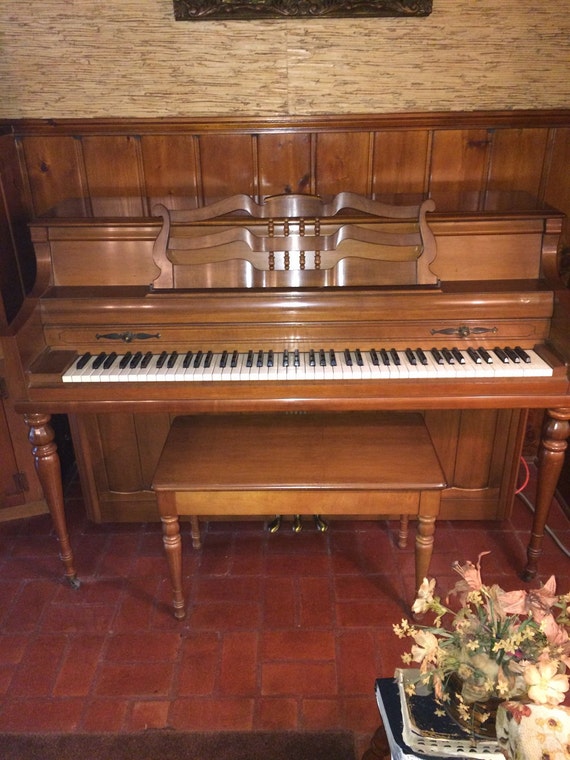

The grand piano has a better sound and gives the player a more precise control of the keys, and is therefore the preferred choice for every situation in which the available floor-space and the budget will allow, as well as often being considered a requirement in venues where skilled pianists will frequently give public performances. There are two main types of piano: the grand piano and the upright piano. Although an acoustic piano has strings, it is usually classified as a percussion instrument rather than as a stringed instrument, because the strings are struck rather than plucked (as with a harpsichord or spinet) in the Hornbostel–Sachs system of instrument classification, pianos are considered chordophones. The strings are sounded when keys are pressed or struck, and silenced by dampers when the hands are lifted from the keyboard. Most notes have three strings, except for the bass, which graduates from one to two.

More rarely, some pianos have additional keys (which require additional strings), an example of which is the Bösendorfer Concert Grand 290 Imperial, which has 97 keys. The black keys are for the " accidentals" (F ♯/G ♭, G ♯/A ♭, A ♯/B ♭, C ♯/D ♭, and D ♯/E ♭), which are needed to play in all twelve keys. This means that the piano can play 88 different pitches (or "notes"), spanning a range of a bit over seven octaves. Most modern pianos have a row of 88 black and white keys, 52 white keys for the notes of the C major scale (C, D, E, F, G, A and B) and 36 shorter black keys, which are raised above the white keys, and set further back on the keyboard. Unlike the pipe organ and harpsichord, two major keyboard instruments widely used before the piano, the piano allows gradations of volume and tone according to how forcefully or softly a performer presses or strikes the keys. The sustain pedal enables pianists to play musical passages that would otherwise be impossible, such as sounding a 10-note chord in the lower register and then, while this chord is being continued with the sustain pedal, shifting both hands to the treble range to play a melody and arpeggios over the top of this sustained chord.

Notes can be sustained, even when the keys are released by the fingers and thumbs, by the use of pedals at the base of the instrument. When the key is released, a damper stops the strings' vibration, ending the sound. These vibrations are transmitted through a bridge to a soundboard that amplifies by more efficiently coupling the acoustic energy to the air.

The hammer rebounds from the strings, and the strings continue to vibrate at their resonant frequency. Pressing one or more keys on the piano's keyboard causes a wooden or plastic hammer (typically padded with firm felt) to strike the strings. Ī piano usually has a protective wooden case surrounding the soundboard and metal strings, which are strung under great tension on a heavy metal frame. The name was created as a contrast to harpsichord, a musical instrument that does not allow variation in volume compared to the harpsichord, the first fortepianos in the 1700s had a quieter sound and smaller dynamic range. The Italian musical terms piano and forte indicate "soft" and "loud" respectively, in this context referring to the variations in volume (i.e., loudness) produced in response to a pianist's touch or pressure on the keys: the greater the velocity of a key press, the greater the force of the hammer hitting the strings, and the louder the sound of the note produced and the stronger the attack. The word "piano" is a shortened form of pianoforte, the Italian term for the early 1700s versions of the instrument, which in turn derives from clavicembalo col piano e forte (key cimbalom with quieter and louder) and fortepiano.


 0 kommentar(er)
0 kommentar(er)
